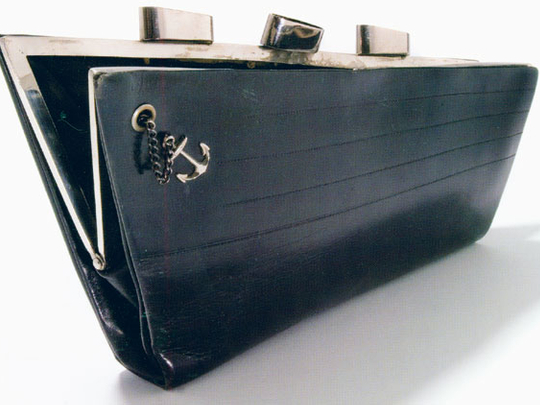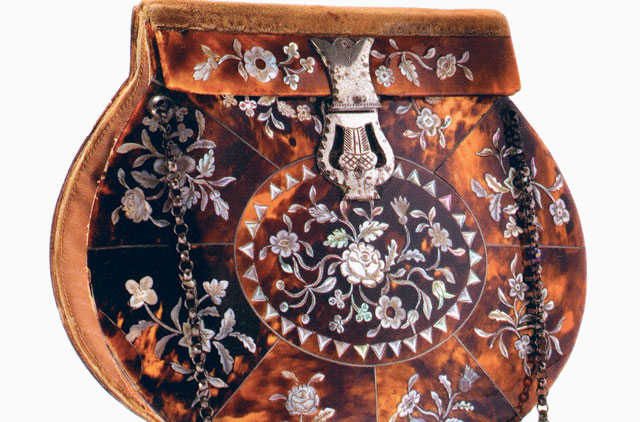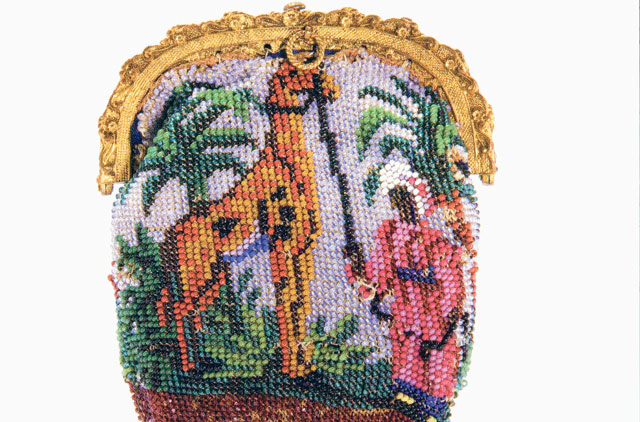
Every woman loves handbags. But perhaps, no woman is as passionate about them as Hendrikje Ivo. The antique dealer from Amsterdam owns more than 4,000 bags and has opened a museum dedicated to them. The Museum of Bags and Purses Hendrikje in Amsterdam is the largest such museum in the world and displays Ivo's collection of bags, purses, pouches, suitcases and other accessories, ranging from 16th-century antiques to the latest designer creations.
Besides the rare and iconic bags on display, what is truly special about the museum is that it traces the evolution and history of bags over five centuries. And through the changing designs of this everyday object, the museum provides interesting insights into socio-cultural environments and developments in industry, applied art and fashion through the ages.
Beginning of a passion
Ivo's love affair with bags began 35 years ago when she found a beautiful tortoiseshell bag inlaid with mother-of-pearl in a small antique shop in the English countryside. She was so fascinated by the history of the bag that she became a collector.
Her husband, Heinz, also shared her passion and the couple began scouring antique bazaars, flea markets and auctions for interesting bags. Soon their house was overflowing with a collection of more than 2,000 bags. To share their unique collection with others, they opened a museum, the first of its kind in the world, in their home in 1996. In 2007, the museum moved to its present location in a historic canal-side house.
Ivo's daughter, Sigrid, is an art historian, specialising in the history of bags, and is the director of the museum. "From the materials a bag is made of, its decoration, the way it was carried and what was carried in it, you can learn a lot about the fashions, the customs, the advances in women's emancipation, the art history movements, the decorative techniques and the economic and technological advances that existed during that period. Thus every bag is a cultural and historical statement of the times and this is what we want to convey to our visitors," says Sigrid.
Surprisingly, the very first bag visitors see in the museum is a gentleman's bag from the 16th century. "In the old days, clothing did not have any internal pockets, hence both men and women needed bags to carry money and other personal items. And they carried the bags suspended from their belts. This goatskin bag has a simple metal frame but behind this is an ingenious fastening device with internal frames and 18 secret compartments. It was probably used by a merchant, to keep the different currencies of the countries he did business in," says Ivo. "But with the arrival of men's clothing with inside pockets in the 17th century, men stopped using bags except for specific purposes such as carrying documents, alms, hunting gear or gunpowder," she adds.
The museum's collection shows that while men stopped using bags, women's bags continued to evolve, reflecting changing fashions and the changing role of women in society. Besides purses hanging from belts, women in the 16th century also used the "chatelaine", which was a metal, silver or gold hook with chains, on to which they could attach personal items such as the money pouch, keys, smelling salts, thimble holder, needle case and pin cushion. Modern versions made in the 19th century came with spectacle cases, notebooks, tinderboxes, opera binoculars, dancing cards, hand mirrors, perfume bottles and fans.
"The word chatelaine comes from the French word for the lady of the manor and refers to the keys of the manor that she wore on her belt. The chatelaine remained fashionable right up to the 20th century and our collection has many beautiful pieces from various periods," says Ivo.
In the 16th and 17th centuries, women also used loose pockets worn under the dress. In those days women's garments were so voluminous that they could easily tuck these flat silk or linen pouches under the many layers of their dress. The pockets were tied around the waist with a ribbon over the underskirt and accessed via slits on the sides of the dress. Several examples of these beautifully embroidered and beaded pockets are also on display in the museum. But as fashions changed, women's garments became less voluminous. Women could no longer conceal the pouches under their linen and muslin gowns with straight cuts and high waistlines. So they began to carry a bag with a drawstring, known as a reticule, in their hand.
In the 18th century, the arrival of the railways and increase in travel led to the creation of a variety of travel bags. Gradually women started carrying the small hand luggage designed for train travel and also for visiting friends and shopping — and the handbag was born. The handbag quickly evolved to fulfil the various needs of the 20th-century woman. There were leather and meshed metal ones for daytime, document bags for the working woman and elegant small evening bags or clutches for an evening at the theatre.
In all shapes and sizes
As more women joined the workforce, the handbag evolved into the more practical shoulder bag. Among the famous shoulder bags at the museum is the military-inspired one designed by Elsa Schiaparelli in 1930 and Coco Chanel's iconic padded bag with gold chain, created in 1955. Other famous bags that women can drool over include the Fendi baguette, the Lady Dior bag, the Dior saddlebag and the Birkin and Kelly bags from Hermes.
The display also includes some funky bags in the shape of a train, a house, a shoe, a cupcake and the Clintons' cat, Socks. There is also a bag made from telephone wires and a bright red telephone-shaped bag with a working press-button phone on the front. Bags made from a variety of materials and with myriad decorations explore the decorative styles and technological advances over five centuries.
Ivo has also collected many rare and special bags such as wedding purses and commemorative bags. One such piece is a silk bridal bag made for the wedding of King Louis XV and decorated with portraits of the king and his bride etched in enamel on copper. Similarly, a clutch in the shape of a cruise ship commemorates the maiden voyage of the ship Normandie and was presented to all first-class passengers on-board. Another interesting piece marks the arrival of the first giraffe in France in 1826.
"The animal, named Zarafa, was a gift from the Egyptian viceroy to King Charles X. After arriving by ship in Marseille, Zarafa walked 800 kilometres to Paris.
"Thousands of people came to see the procession of the giraffe accompanied by her exotically dressed Egyptian carers and followed by 100 cows that provided her milk. In Paris, the king held a reception for Zarafa and she was the rage of the season. These bags with Zarafa's image in beads were created as souvenirs of the event and were very fashionable at the time," says Ivo.
The museum also hosts exhibitions by young, upcoming bag designers and well-known contemporary designers and brands. And to end a fascinating visit, the museum outlet offers bag lovers an irresistible array of bags, including copies of both antique designs and contemporary creations. "I hope all visitors, whether they are women or men, will enjoy this journey through the history and significance of the bag," says Ivo.
The composition of bags
An interesting variation of the bag was the minaudiere. In the early 20th century, influenced by cinema stars, many women began smoking and using cosmetics. The sleek metal minaudiere was designed especially to carry their cigarettes, lipstick and rouge. The original minaudiere was a silver one designed by Van Cleef and Arpels in 1930. Other examples in the museum include an enamel one from Asprey with a removal clasp that could be worn as a brooch and one with a lipstick compartment cleverly hidden in the tassel.
The materials from which bags have been made include fabrics such as silk, damask, velvet and muslin; the skins of crocodiles, snakes, ostrich, lizards, armadillo, stingrays, eels and Nile perch; natural materials such as wood, cactus fibre, straw, reed and raffia; and synthetic products such as faux leather, plastic, Perspex and see-through Lucite.
Decorations on bags range from delicate petit point embroidery, glass or steel beads, enamel work, mother-of-pearl, lace, crystals and ivory to colourful Art Deco designs in aluminium and chrome.
For more information or a virtual visit, go to www.tassenmuseum.nl
Jyoti Kalsi is a UAE-based art enthusiast.













